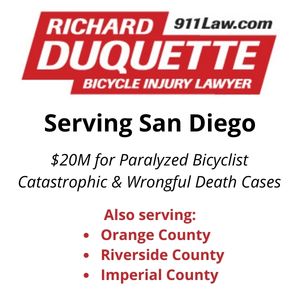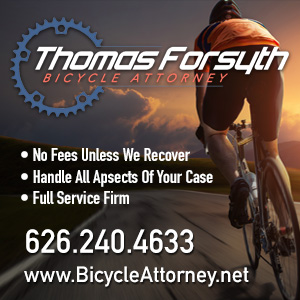In Spike Lee’s classic movie, they told him to do the right thing. But no one could seem to figure out just what that was.
You see, when I got home from my ride today, I found an email waiting from yet another friend I’ve never met; a reader who’s been kind enough to steer my attention to a few things I might have missed otherwise.
This one included.
As Patrick put it,
I don’t know the first thing about the LA Greensters, but, as vice-chair of the board, I am well familiar with St. Anne’s and the great things they do for the young women and their children in the Rampart district and beyond. If you could find space on your blog for a mention, it could help brighten a few more Christmas mornings.
Who could resist an invitation like that?
So I clicked on the attached link, and found myself reading about next month’s El Niño (para las niñas) Toy Ride, sponsored by LA Greensters — a group of cyclists committed to creating a more sustainable model for the film industry.
And the more I read, the more I was moved — and the more I agreed that this is something you’d want to know about.
You see, for over 100 years, St. Anne’s has helped local women, children and families in need, dealing with issues like teen pregnancy and parenting, physical, sexual and emotional abuse, and homelessness among adolescents.
But recently, they got some bad news.
The toys they were counting on for their annual Christmas Party wouldn’t be coming, after all. Which meant that 150 children wouldn’t get gifts this year.
At least, that’s where things stood until the big-hearted people at LA Greensters found out about the situation and decided to do something about it.
Now they need your help.
On Sunday, December 6th, they’re inviting cyclists to meet them at the Red Line Metro Station at Santa Monica and Vermont at 1 pm for an easy, family-oriented ride to St. Anne’s. And they’re asking you to bring along an unwrapped toy or other gift appropriate for children:
Everyone is encouraged to bring along an unwrapped toy or gift for children ages 0-17. We can arrange to pick up gifts and/or money donations before the ride if you cannot attend or wish to make a larger donation. If your toys are too big or too heavy for you to carry on the ride we are equipped to haul these items for you. All donations are fully tax deductible and a letter of acknowledgment will be sent to you from St. Anne’s a 501 (c)3 organization.
I know this has been a hard year for all of us. Myself included.
But I can’t think of anything that would make me more proud of this city’s cyclists than for a thousand cyclists to show up for the ride bearing so many gifts that the children of St. Anne’s can have a holiday they’ll remember for the rest of their lives. Maybe even enough that the sisters of St. Annes can pass them along to other organizations in need.
And they’ll have the generosity of the cycling community to thank for it.
Unfortunately, it doesn’t look like I’ll be able to join in. But I am going to stretch my budget to make room for a few toys I hadn’t planned buying on this year. So if the Greensters want to swing by and pick them up next week, just let me know when.
For all your corporate types out there, this is a great opportunity for your company to make a donation that will really make a difference. Or if you’re outside the L.A. area and want to help, I’m sure they’ll take a check.
For the rest of us, it only takes one small toy to put a smile on a child’s face. So do what you can. And pass this page, or the link to the LA Greenster’s Facebook page, along to everyone you know.
Because this is a chance to open your heart and do the right thing.
And for once, you don’t have to be Spike Lee to figure out what that is.
……..
LACBC catches the new Chief’s ear, and gets a promise to address the problem of bike thefts, assaults and harassment against cyclists. Joe Linton does the math, and discovers that L.A.’s new bike plan calls for just 28 — yes, 28 — new miles of bike lanes; Dr. Alex says cyclist could have gotten more for our money if the plan had been created on a compost powered laptop. Flying Pigeon celebrates the Gold Line extension by offering a same-day discount to anyone who rides it. Acomprehensive regional transit plan for Los Angeles; too bad it’s 60 years old. Even though state law requires that bikes have equal access to every street, DWP still offers separate but unequal access to the annual Holiday Light Festival. Writing on Bike Lawyer Bob Mionske’s blog, Rick Bernardi discusses police enforcement of a non-existent law against riding two-abreast in Redondo Beach. Cities for Cycling will attempt to improve road design standards to include cyclists and pedestrians. Shoot a cyclist with a gun, get 120 days in county lockup; shoot a car with a pellet gun, get over three years in state prison. The next time a driver complains that cyclists don’t pay our shareof road fees, show them this. Indianapolis forgives tickets for commuters who ride park trails before or after posted hours. In an interesting tactic, a Toronto cyclist takes the city before the labor relations board, claiming the streets aren’t safe for working commuters. The Department of DIY opens a branch in London’s East End. Finally, yesterday was a difficult day for cyclists; here in Westwood, at 9th and La Brea, and in the Windy — and rainy — City (love that headline, Dottie).







Special Thanksgiving edition open comments
L.A. cyclists have a lot to be thankful for this year.
Like a new police chief and a department who are finally starting to hear our complaints. Along with an extension of the comment period for the new bike plan. And yesterday’s perfect weather that had me watching other cyclists with envy on the way to Thanksgiving dinner.
Unfortunately, I’m not going to have time to write about it, since I’ll be on the run all weekend. Including risking my life by going to Target on Black Friday to pick up a few toys for next week’s El Niño Toy Ride.
So let’s try an experiment.
Rather than go dark all weekend, I’m going to open this up to your comments. Just click on the Reply link below and say anything you want, on any bike topic.
Have a bike to sell or want to report a stolen bike? Have a complaint or high praise for someone? Got some news? As long as it’s even vaguely bike-related and relatively inoffensive, it stays.
Maybe we’ll even get an update from our colorful Kiwi correspondent, as he joins hordes of the spandex-clad in overrunning a small New Zealand town.
So comment away. I’ll try to add some links later this evening.
And if you like it, maybe we’ll make this a regular weekend thing.
……….
Metro is looking for volunteers to for a study of the Orange Line and it’s bikeway. The first entry in the challenge to write an intro to LA’s best bike plan. A Brea woman converts her spare change into bikes for Marine families at Camp Pendleton. Bike Oven and Flying Pigeon host the city’s first bike corral. Pierce Brosnan and sons bike through the ‘Bu. San Diego cyclists install a ghost bike for the killed in recent collision with a police vehicle. A Visalia driver is killed after striking a cyclist, then crashing into a tree. San Francisco finally gets the go ahead to begin work on its long-standing bikeway projects. Bikers and ranchers collide in Colorado’s backcountry. A Kentucky cyclist is just thankful to be alive this year. Now you, too, can have a holder for your decaf Venti Carmel Macciato during your commute. Finally, an award-winning VW ad suggests it’s the ideal car for dooring cyclists.
Share this:
Like this: